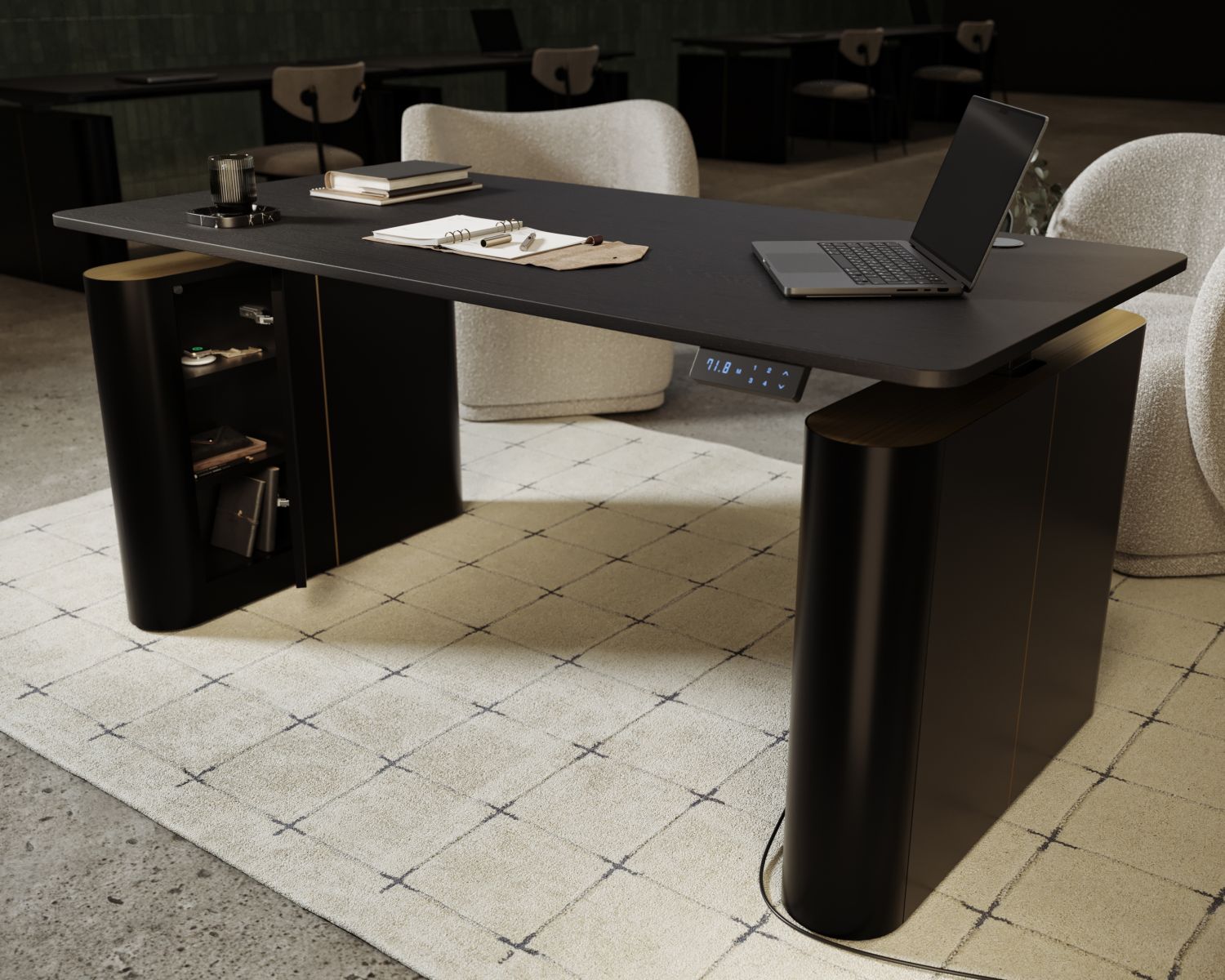Welcome to the fascinating world of ergonomics, a science that combines human biology, psychology, engineering, and design to create work environments that fit the human body and its cognitive abilities. Ergonomics is not just about making your workspace comfortable, but also about boosting productivity and reducing the risk of work-related injuries.
In recent years, ergonomics has become a buzzword in office settings, with everything from chairs and keyboards to lighting and desk heights being scrutinized for their ergonomic value. One of the most popular ergonomic trends is the standing desk. In this article, we will delve into the science of ergonomics, understand the standing desk trend, and guide you on how to determine the ideal height for your standing desk.

Understanding the Standing Desk Trend
The standing desk trend is more than just a fad—it's a response to the increasing awareness of the health risks associated with prolonged sitting. Sitting for long hours has been linked to a host of health issues, including obesity, heart disease, and even certain types of cancer. As a result, many office workers are opting for standing desks, which allow them to alternate between sitting and standing throughout the day.
However, it's not enough to just stand. The way you stand and the height of your desk are crucial factors in determining whether or not you reap the health benefits of a standing desk. This is where ergonomics comes in.
The Health Benefits of Standing Desks
Standing desks have been shown to have numerous health benefits when used correctly. They can help improve posture, burn more calories, reduce back pain, and even boost mood and energy levels. Standing desks can also help improve blood circulation and can be beneficial for people with certain health conditions, such as diabetes or cardiovascular disease.
However, it's worth noting that standing all day isn't the answer either. The key is to balance sitting and standing throughout the day, which is often referred to as sit-stand working.
How to Determine the Ideal Height for Your Standing Desk
When it comes to determining the ideal height for your standing desk, ergonomics is key. Your desk should be at a height where your elbows are at a 90-degree angle when your hands are on the keyboard. Your computer monitor should be at eye level, so you're not straining your neck to look up or down.
Start by standing up straight and relaxing your shoulders. Extend your arms in front of you so that your elbows are at a 90-degree angle. This is the height at which your keyboard should be. To determine the correct height for your monitor, sit or stand straight and look straight ahead. The top of your screen should be at or slightly below eye level.

Tips and Tricks for Maintaining Good Posture at a Standing Desk
Maintaining good posture is crucial when using a standing desk. Here are some tips and tricks to help you do just that. First, stand up straight and keep your shoulders relaxed. Don't slouch or lean on the desk. Second, keep your screen at eye level and at a distance where you can easily read the text without straining your eyes.
Also, use an anti-fatigue mat. This can help reduce the strain on your feet and lower back. And don't forget to move! Standing in one place for too long can be just as bad as sitting for too long. So, take short breaks, stretch, and walk around a bit.
The Role of Ergonomics in Productivity and Comfort
Ergonomics plays a crucial role in productivity and comfort in the workplace. A well-designed, ergonomic workspace can help reduce fatigue, discomfort, and physical stress, while also improving job satisfaction, productivity, and quality of work.
In the context of standing desks, having your desk at the right height can prevent musculoskeletal disorders such as carpal tunnel syndrome and neck and back pain. This not only makes you more comfortable but also helps you stay focused and productive.
Ergonomic Accessories to Complement Your Standing Desk
To enhance the ergonomic benefits of your standing desk, consider adding some ergonomic accessories. An adjustable monitor arm can help position your screen at the right height and distance. An ergonomic keyboard and mouse can reduce the strain on your wrists and hands.
Don't forget about your feet. An anti-fatigue mat can provide cushioning and support, while a footrest can help you shift your weight and change your standing position throughout the day.

Common Mistakes When Using a Standing Desk
While standing desks have many benefits, it's easy to make mistakes when using them. One common mistake is standing for too long. Just as sitting all day can be harmful, so can standing. It's important to balance standing with sitting and moving throughout the day.
Another mistake is not adjusting the desk to the right height or not maintaining good posture. It's crucial to adjust your desk so that your screen is at eye level and your keyboard and mouse are at a height where your elbows are at a 90-degree angle.
Conclusion
In conclusion, mastering the ergonomics of your standing desk can significantly enhance your health, comfort, and productivity. Remember to adjust your desk to the right height, maintain good posture, balance standing with sitting and moving, and consider adding ergonomic accessories. Also, don't hesitate to seek professional advice if needed. Here's to a healthier and more productive workday!
Written by individual contributors and
curated by Rove Concepts Team